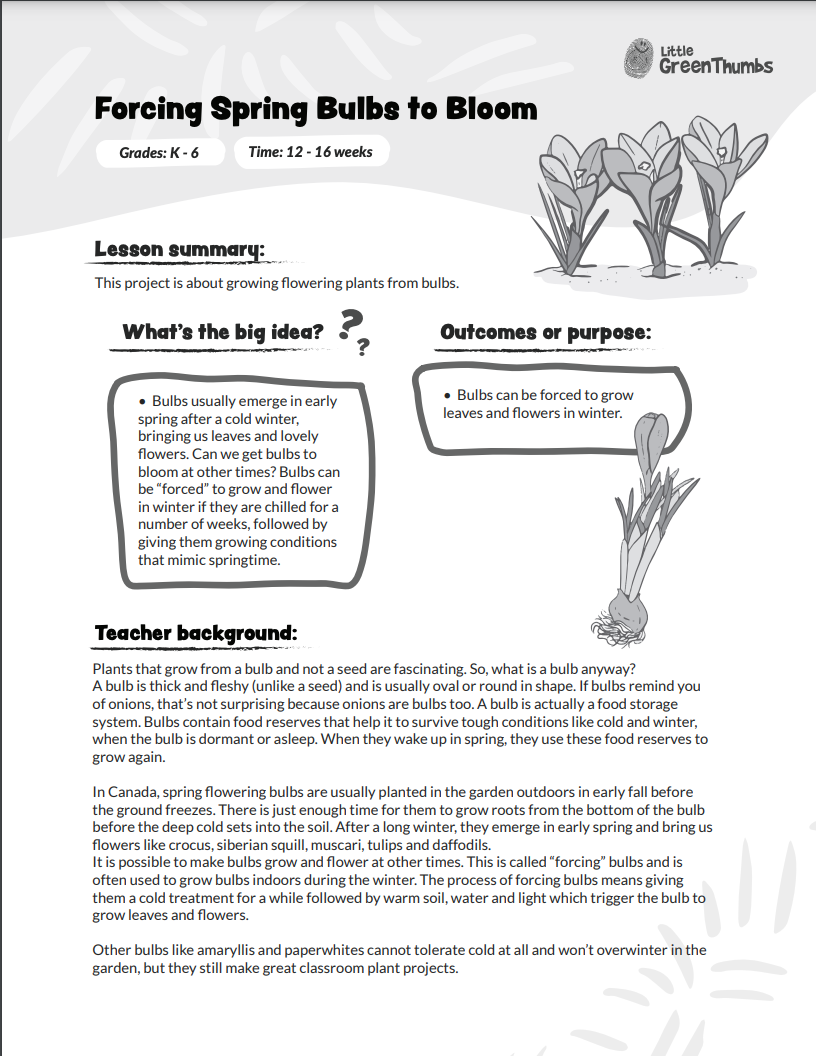Experiment:Forcing Spring Bulbs to Bloom
Grades: K – 6
This project is about growing flowering plants from bulbs.
Time: 12-16 weeks
Plants that grow from a bulb and not a seed are fascinating. So, what is a bulb anyway? A bulb is thick and fleshy (unlike a seed) and is usually oval or round in shape. If bulbs remind you of onions, that’s not surprising because onions are bulbs too. A bulb is actually a food storage system. Bulbs contain food reserves that help it to survive tough conditions like cold and winter, when the bulb is dormant or asleep. When they wake up in spring, they use these food reserves to grow again.
In Canada, spring flowering bulbs are usually planted in the garden outdoors in early fall before the ground freezes. There is just enough time for them to grow roots from the bottom of the bulb before the deep cold sets into the soil. After a long winter, they emerge in early spring and bring us flowers like crocus, siberian squill, muscari, tulips and daffodils. It is possible to make bulbs grow and flower at other times. This is called “forcing” bulbs and is often used to grow bulbs indoors during the winter. The process of forcing bulbs means giving them a cold treatment for a while followed by warm soil, water and light which trigger the bulb to grow leaves and flowers.
Other bulbs like amaryllis and paperwhites cannot tolerate cold at all and won’t overwinter in the garden, but they still make great classroom plant projects.
Materials needed:
- Pots
- Potting soil (soilless medium that contains peat moss, vermiculite and perlite)mall plastic plant container about 7 – 10 cm high (or recycled paper cups with a drainage hole in the bottom) Plant Light Shoebox Maze Experiment
- Bulbs of your choice

